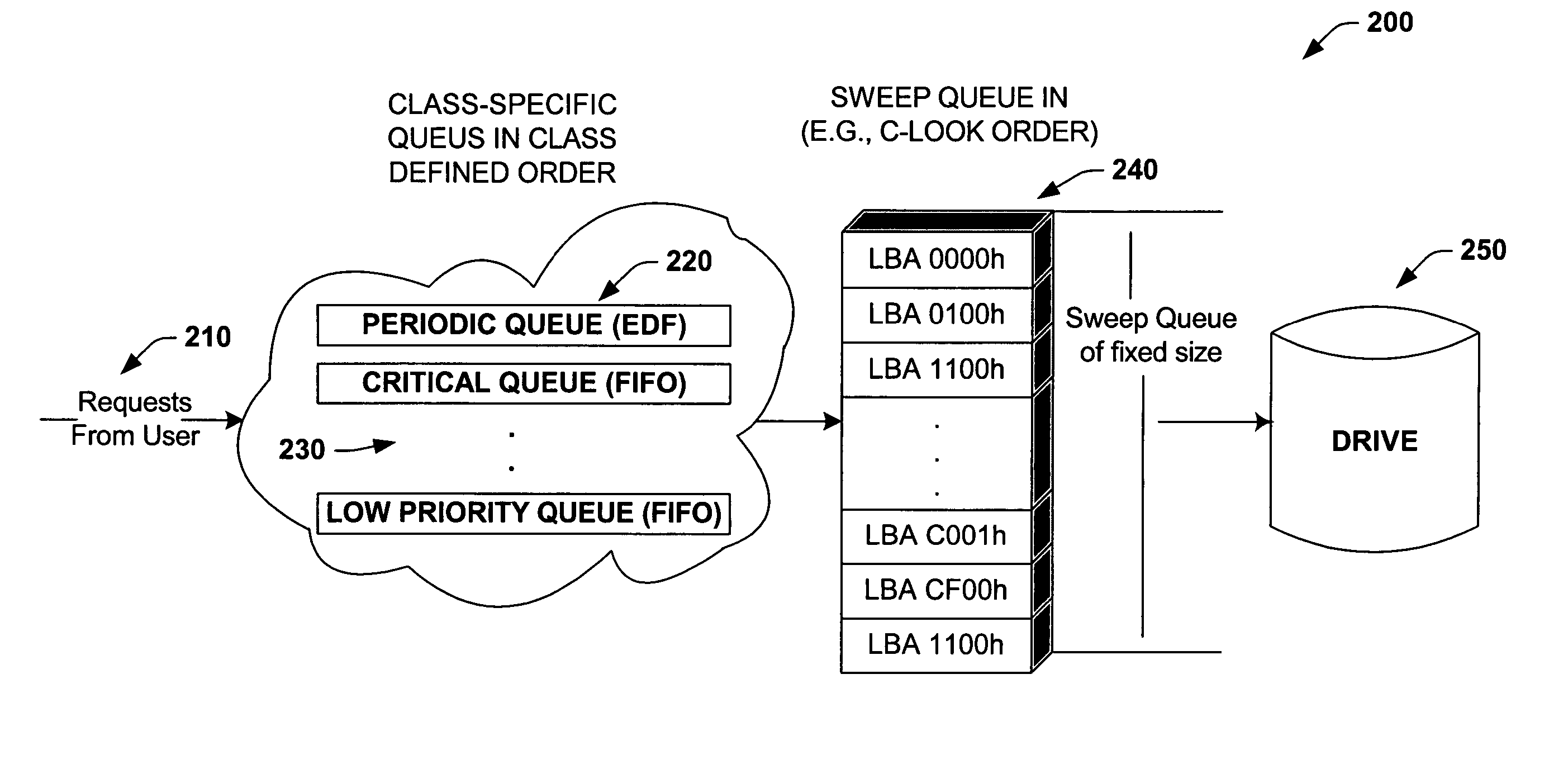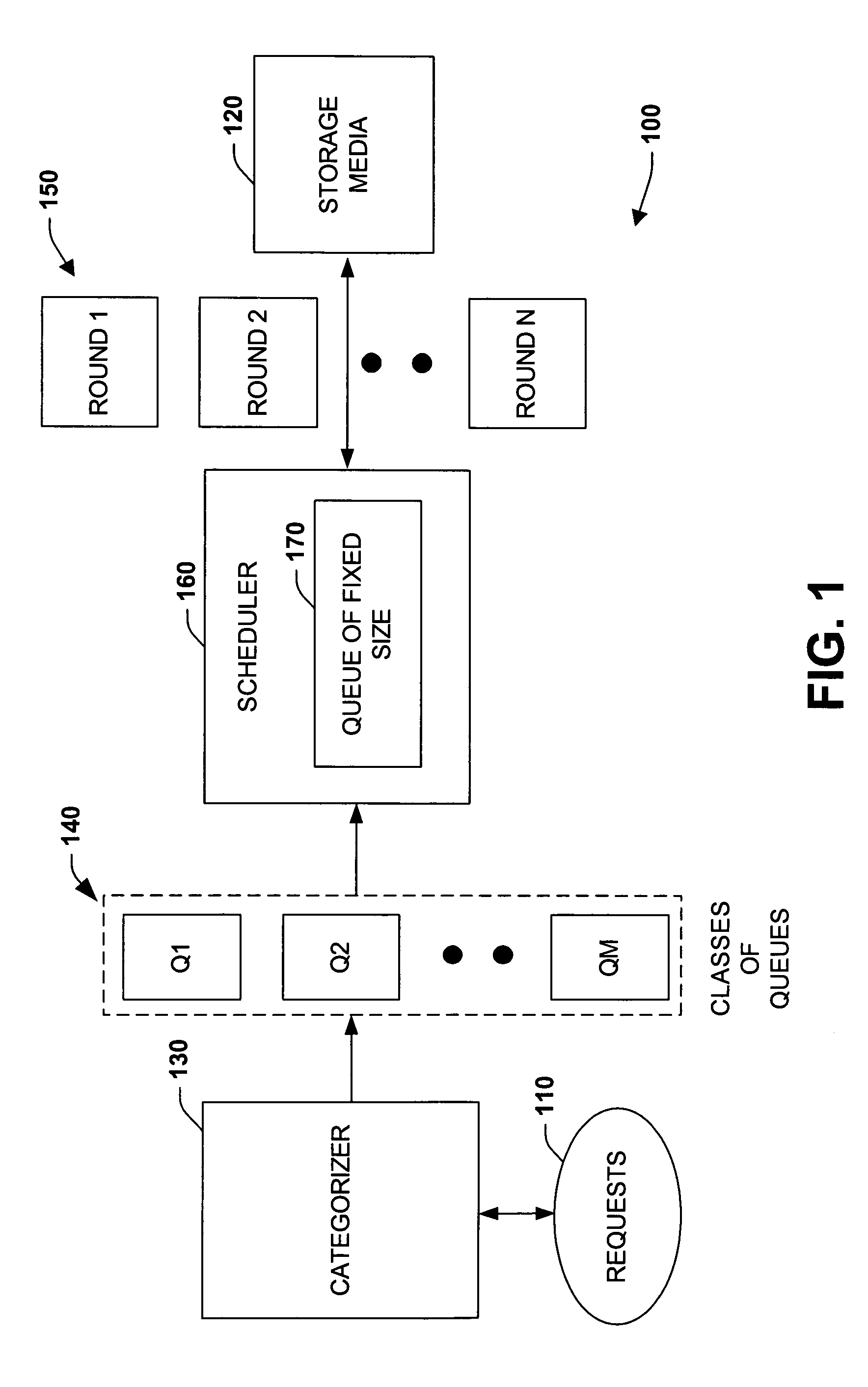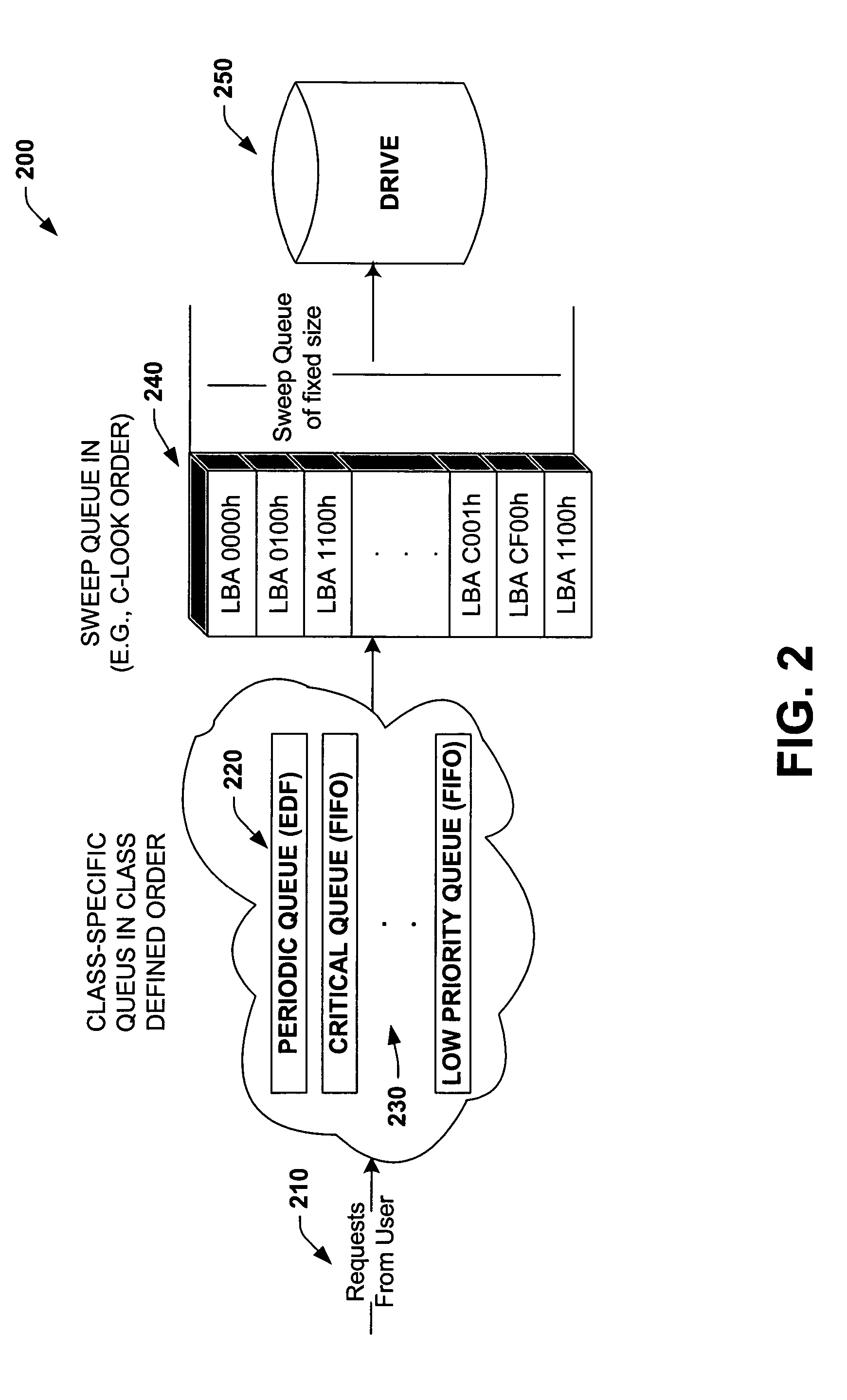Continuous media priority aware storage scheduler
a storage scheduler and priority technology, applied in the field of computer systems, can solve the problems of large latencies of c-look algorithms, high cost of i/o requests, and high cost of potentially and dramatically higher latencies, and achieve efficient and timely data scheduling, high throughput to the disk drive, and facilitate dynamic scheduling. effect of data reques
- Summary
- Abstract
- Description
- Claims
- Application Information
AI Technical Summary
Benefits of technology
Problems solved by technology
Method used
Image
Examples
example
[0032]
while periodic-queue ≠Ø and periodic-slots ≠0 and DEADLINE (periodic-queue) INSERT_LBA_ORDER (sweep-queue, REMOVE_EDF_ORDER (periodic-queue)) periodic-slots = periodic-slots − 1endfor priority = High downto Idle do while priority-list [priority].slots ≠0 INSERT_LBA_ORDER (sweep-queue, REMOVE_FIFO_ORDER (priority-queue [priority])) priority-list [priority].slots = priority-list [priority].slots − 1 endendwhile sweep-queue ≠Ø do SCHEDULE (REMOVE_MINMUM_LBA (sweep-queue))end
[0033]It is noted that the above algorithm has a well-defined upper bound on the latency to complete a specified number of requests. For n requests, n being an integer, the upper-bound on latency is as follows:
[0034]service(n)=n(time_seek(CylindersN)+timetransfer+timerotation+timecontroller)+timesweep.
[0035]Therefore, in the above algorithm, the maximum I / O service time is parameterized by the sweep-depth variable (n). Given sweep-depth and the parameters for a specific disk drive, one can compute t...
PUM
 Login to View More
Login to View More Abstract
Description
Claims
Application Information
 Login to View More
Login to View More - R&D
- Intellectual Property
- Life Sciences
- Materials
- Tech Scout
- Unparalleled Data Quality
- Higher Quality Content
- 60% Fewer Hallucinations
Browse by: Latest US Patents, China's latest patents, Technical Efficacy Thesaurus, Application Domain, Technology Topic, Popular Technical Reports.
© 2025 PatSnap. All rights reserved.Legal|Privacy policy|Modern Slavery Act Transparency Statement|Sitemap|About US| Contact US: help@patsnap.com



